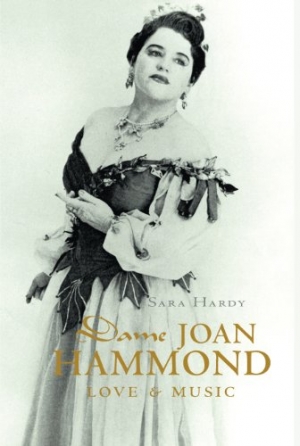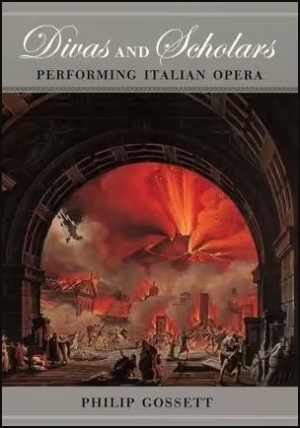Opera
Of all the many projects commemorating the centenary of World War I and the Anzacs’ contribution to it, the creation of an opera from David Malouf’s magnificent novella Fly Away Peter (1981) would seem to be one of the most demanding.
The story follows the young, bird-obsessed Jim Saddler f ...
Opera Australia’s autumn season in Melbourne with two revivals – one very familiar; the other in its second season, and its first on the bigger Melbourne stage. Each, responsibly, is on a Monday, not always guaranteed to draw a large audience, but the capacious State Theatre was well attended for the first offering, Madama Butterfly.
Moffa ...
Aida (![]() ) is one of the great contradictory operas: grandiose in effect yet intimate in emotional content. How such an imperial chamber piece would translate onto a harbour in front of thousands of people and sundry camels remained to be seen. It was an a ...
) is one of the great contradictory operas: grandiose in effect yet intimate in emotional content. How such an imperial chamber piece would translate onto a harbour in front of thousands of people and sundry camels remained to be seen. It was an a ...
Scottish director David McVicar’s importance to Opera Australia – after his acclaimed Don Giovanni in 2014 – grows with this new production of his Covent Garden Faust, which is currently being seen in Sydney. The production dates back to 2004 ...
For many of us – those of us not in the Farnham faction – this was our first visit to the Palais Theatre in three decades. (It has mostly been used as a rock venue since the Australian Opera decamped.) So there was much anticipation before the opening night of Victorian Opera’s The Flying Dutchman, perhaps the most ambitious production in the company’ ...
Opera Australia’s spring season in Melbourne opened with two masterpieces by Verdi in his bicentennial year. It was a decidedly rocky pairing.
La Fura dels Baus’s production of Un Ballo in Maschera was first seen in Sydney in January. La Fura is open about its intentions. Assistant director Valenti ...
My husband is proud to claim that in the 1950s, when they were both employed at Covent Garden, he was paid a larger salary than Joan Sutherland was. Fresh from Sydney, she had joined the company in 1952, and was soon appearing in small roles, including Clotilde, opposite Maria Callas’s Norma. This was followed by several years of steady progress and major roles (Agathe, Antonia, Micaela), but no great public success. My husband watched Joan’s progress from the beginning of her time and realised, as did others, that here was a great singer in the making. Then, in February 1959, Sutherland, directed by Franco Zeffirelli, made her triumphant début as Lucia di Lammermoor, and everything changed dramatically, including her fees.
... (read more)Sylvia Martin reviews 'Dame Joan Hammond: Love and Music' by Sara Hardy
My mother, a fine mezzo soprano, had three all-time favourite singers: Kathleen Ferrier, Maria Callas and our own Joan Hammond. When I was a child, my parents took me to see the famous diva perform Tosca in Melbourne – standing room only at the back of the circle. I remember red velvet, a thrilling voice, my own tired legs and a sense that I was in the presence of greatness. Sara Hardy’s biography of Joan Hammond (1912–96) is a timely publication. The number of people who remember the Australian soprano is dwindling, her fame eclipsed by another Dame Joan (who once, early in her career at Covent Garden, understudied Hammond in Aida).
... (read more)Robert Gibson reviews 'Divas and Scholars: Performing Italian opera' by Philip Gossett
Divas and scholars is the work of a scholar who is no stranger to the world of divas. Philip Gossett is a music professor at the University of Chicago and is principally in the business of preparing scholarly editions of nineteenth-century operas by Italian composers. We might think of the academic institution and the opera house as antithetical spaces, but Gossett is frequently called upon to advise and assist with the staging of works that belong to his area of expertise. In other words, not only does he know the operas of Rossini, Bellini, Donizetti and Verdi as historical artefacts and texts that take all manner of forms –fragments, drafts, complete manuscripts, variant manuscripts – but as phenomena that take shape on stage and in the orchestra pit in contemporary realisations that, as he argues, owe a responsibility to the fruits of scholarship. Divas and Scholars, then, is part personal and professional history, part history of nineteenth-century Italian opera (and operas in French by Italian composers), part manifesto, treatise on the transmission of opera and handbook for present-day singers, conductors and opera producers. In a happy coincidence, the author’s surname is a near-homonym for gossip, and this excellent book is leavened with timely and beautifully judged accounts of vanity, ignorance and arrogance: three vices which, while not indigenous to the opera house, are often depressingly at home within its gilded ambience.
... (read more)John Slavin reviews ‘Timing Is Everything: A life backstage at the opera’ by Moffatt Oxenbould
To state the case bluntly, is there in fact any place for opera in the twenty-first century? What is the use of opera? Many would say that it is a moribund art form, traditional and arthritic, class-ridden, a minority and élitist pursuit of an arcane society harbouring secret rituals in the mode of cabbalists with their adherence to vision and the genealogy of seers. My questions suggest some kind of crisis. Yet they are unanswerable because, like all art at a profound level, opera is useless.
... (read more)


